I know. You’re sitting there thinking “Is she seriously writing another post about her butcher block countertops?” Consider me your science experiment. No really. Take my mistakes and trial and errors and learn from them, so you don’t have to go through all of this trial and error with your countertops. I mean why else would I come up with a witty title for this blog called “Why my butcher block countertops and mineral oil got a divorce”, if I didn’t have a reason to encourage you to try a different oil as a treatment for your butcher block countertops. Possibly Google SEO but that’s another story.
If this is the first time you’re here, may I suggest reading my first two posts on the subject of butcher block countertops.
Adventures in Staining Butcher Block
This where I talk about our previous IKEA butcher block countertops. I go over various ways of staining them, using Dark Tung Oil from the Real Milk Paint Company, why even though it’s a great product, it didn’t work for our kitchen and link to about 10 other posts from bloggers using different things for their butcher blocks.
The Reality of having Butcher Block countertops
This is where I talk about our second and current set of butcher block countertops from Lumber Liquidators. I go over all of the Pros and Cons and the reality that comes with having them in your kitchen to help you decide if they’re right for your kitchen.
And this is the post where I finally give up on mineral oil as my preferred method of treating my counter tops.
Let me explain why I switched to Fusion Beeswax Finish and Fusion Hemp Oil. I was first introduced to Beeswax as a treatment method by Old Town Home and Sarah from the Ugly Duckling House. They both use different products but both use a combination of an oil with a beeswax on it.
For a long time I thought mineral oil was enough. And to tell you the truth, with the lighter IKEA counter tops, it really isn’t a bad choice still. But when we got the new counter tops in our current house, the walnut wood which is obviously darker with more colour variation, changed that completely.
Here is a very candid photo of what your butcher block countertops can look like after daily use *IF* you don’t properly maintain them.
I am talking strictly for those of you using an oil, not those of you who have sealed with a polyurethane style sealant.
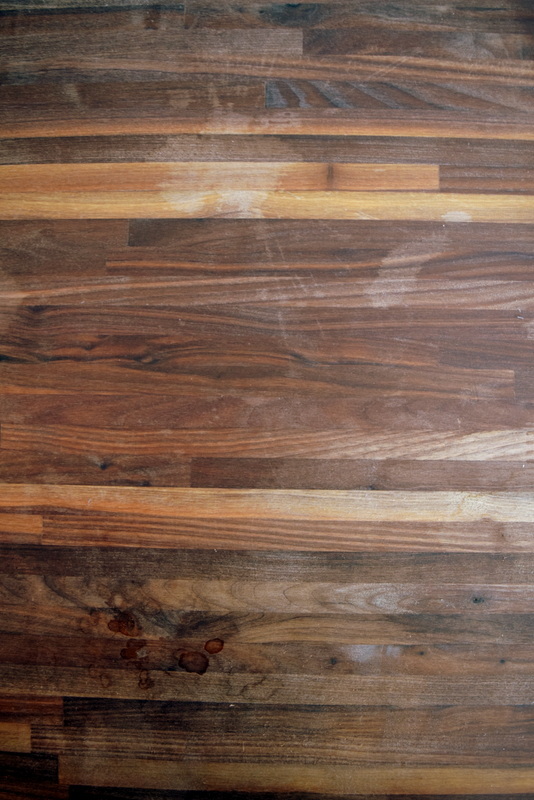
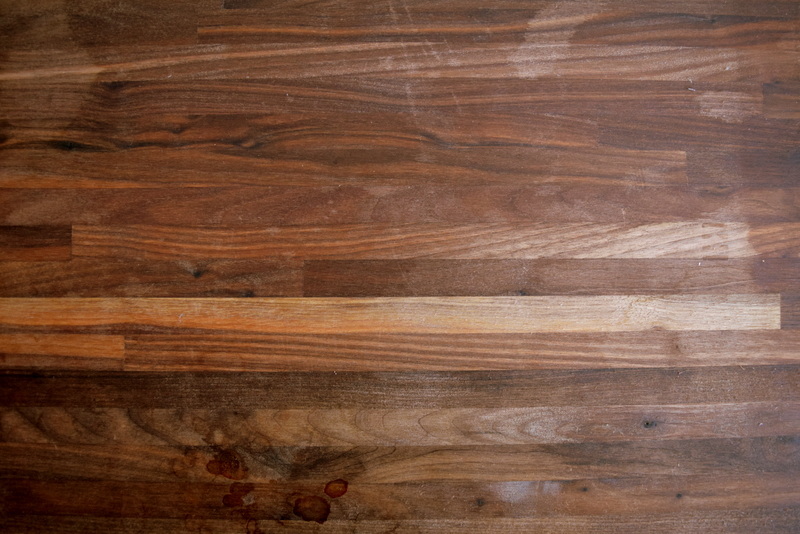
Coffee spills. Patches of wood drying out. Food and flour being sifted into the grain. Water marks. Etc. On dark wood, this shows up WAY more than the light wood. It’s the same as your floors.
Dark wood shows every speck of dust on the planet. Light colored wood, is a lot more forgiving.
I was fed up with how quickly our walnut butcher block was drying out and looking blotchy, that I started looking into other solutions. I’ve debated on using Waterlox but I am not there yet. If I get there, I’ll write another post and then you can really question why I have butcher block counters to begin with. I came across Fusion’s Beeswax products through my friend Laurie from Vinyet Etc. who is a big fan of the product. I figure why not? Let’s try it.
This is the best side by side photo I could get where I could see the wax line and the messy dried out part. Wax is very subtle and you have rub it onto the counters in a circular motion, then it starts to do it’s thing. This was the first run at the wax.
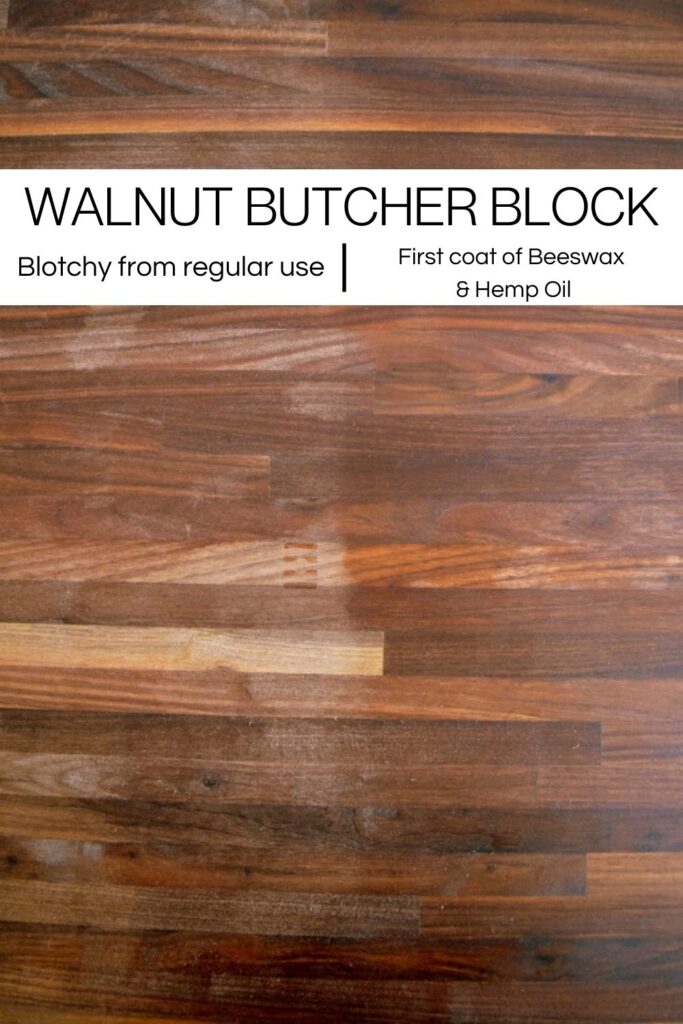
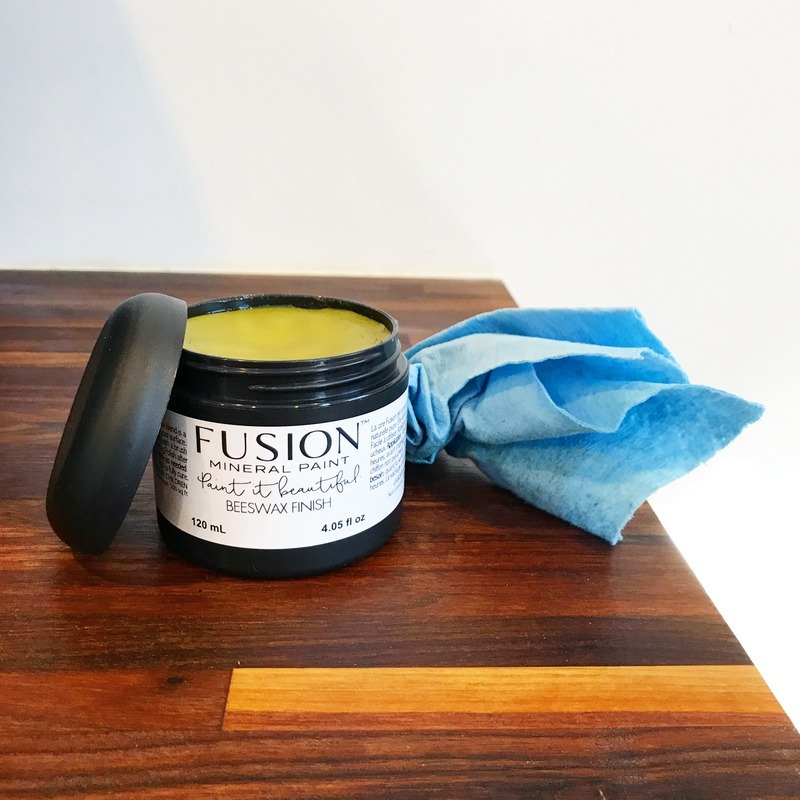
Fusion Beeswax is made of 100% pure beeswax and hemp oil. That’s it. It’s food safe, which is very important to me because I cook a lot and food is all over our counter tops during baking marathons. But it also leaves a matte finish which is one of the reasons I have not used a polyurethane finish. I am not a fan of shiny wood counters, furniture, floors, you name it.
What did it look like after I finished applying it?
Well…
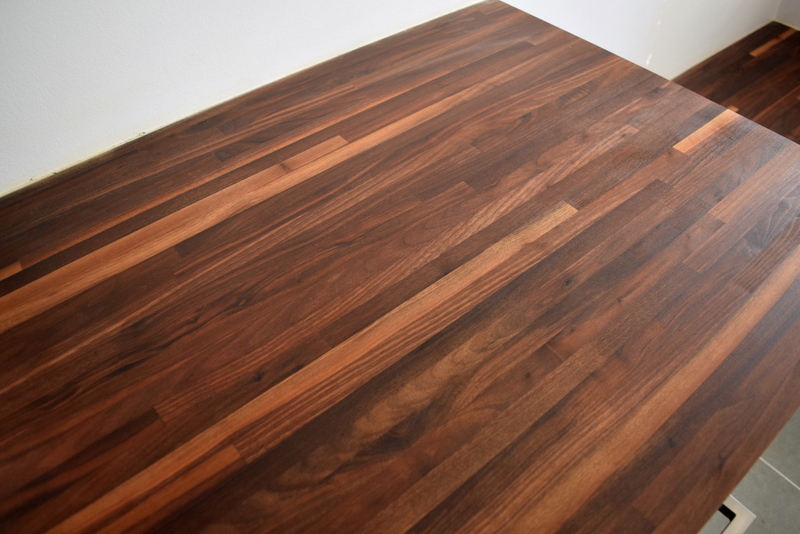
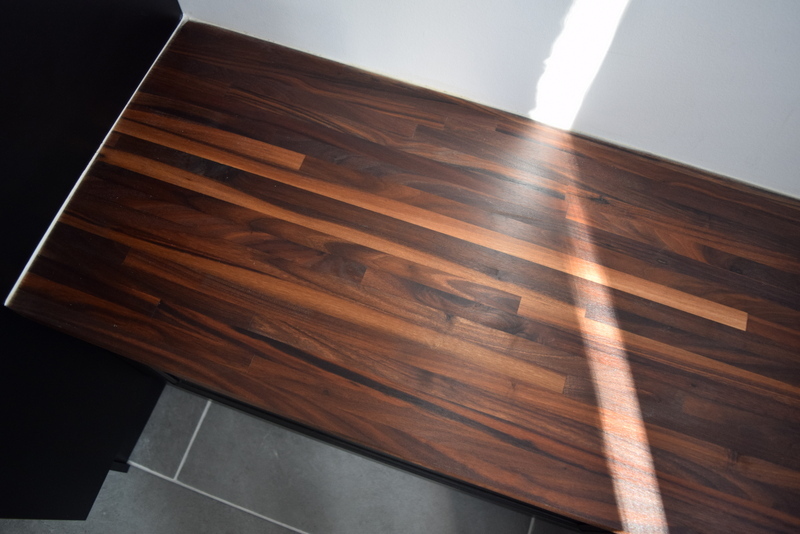
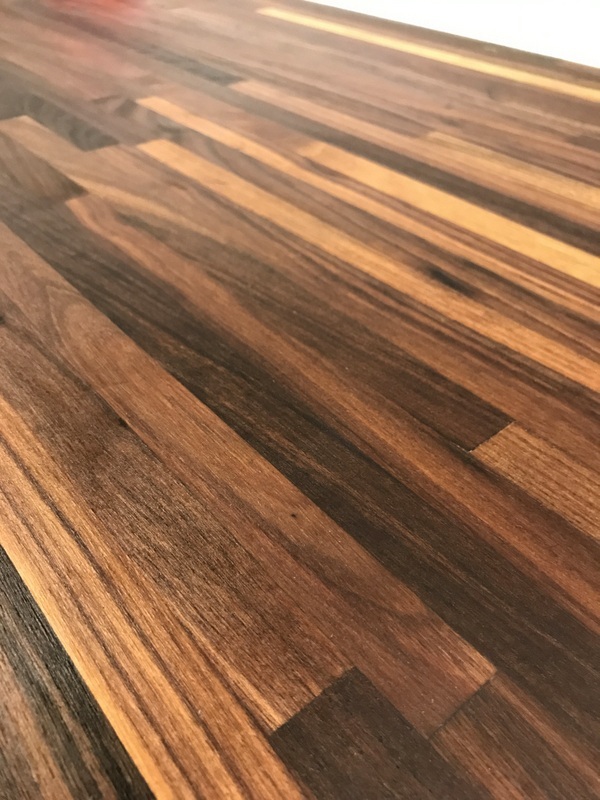
Those photos are the exact same parts of my counter top as the first series of photos. Just with the beeswax on it.
Game changing.
I waited a month before I wrote this post so I could see how it held up and how well it cured.
Here are some things I learned.
- You can still get water rings (this happened more towards the end of the month) but that happens on any surface, wood or otherwise.
- You will need to do spot touch up and reapply in high traffic use areas of your butcher block (i.e. around the sink where water tends to gather)
- It is very durable and almost unaffected by scrubbing. I use my scouring pads on my counters to remove dried up tomato sauce and the spot still stayed the same shade as before. I still feel water is a butcher block counters worse enemy because my scouring pads don’t affect my counter tops as much as water does. Fusion’s paint line is also very good at holding up against scouring pads and I can attest to that because I painted our old kitchen cabinets with it.
- The colour is still vastly more rich than it was using the mineral oil and stayed that way for the month. With repeated treatments (you should treat your counter tops at least once a month to keep them in good condition) I can only see this product making them better over time.
- The best benefit was the lack of greasy feeling. Mineral oil even after sinking it, can leave a residue so that if you put a piece of paper on your counters, it will seep through it and leave oil spots on the paper. With this, there were touches of that, but nowhere near as oily as the mineral oil.
- It’s a very smooth matte finish that really makes the wood tones pop.
That means, for now, I am divorcing my mineral oil in favour of Beeswax finish. If you have any questions, don’t hesitate to ask in the comments. You can purchase Fusion Beeswax directly from Fusion Mineral Paint’s site or look up their retailer list to find a retailer near you. Better yet, go visit Laurie’s site and ask her what she thinks of it. I owe this find to her.
PRODUCT REVIEW UPDATE AND BRAND ALTERNATIVES:
Since I wrote this post, I have alternated between Fusion’s Beeswax and Fusion’s Hemp Oil. I use the Hemp Oil on a regular basis and the beeswax when it needs a good polish. I find the Hemp Oil way easier and it absorbs quickly, without that horrible residue that mineral oil can often leave behind.
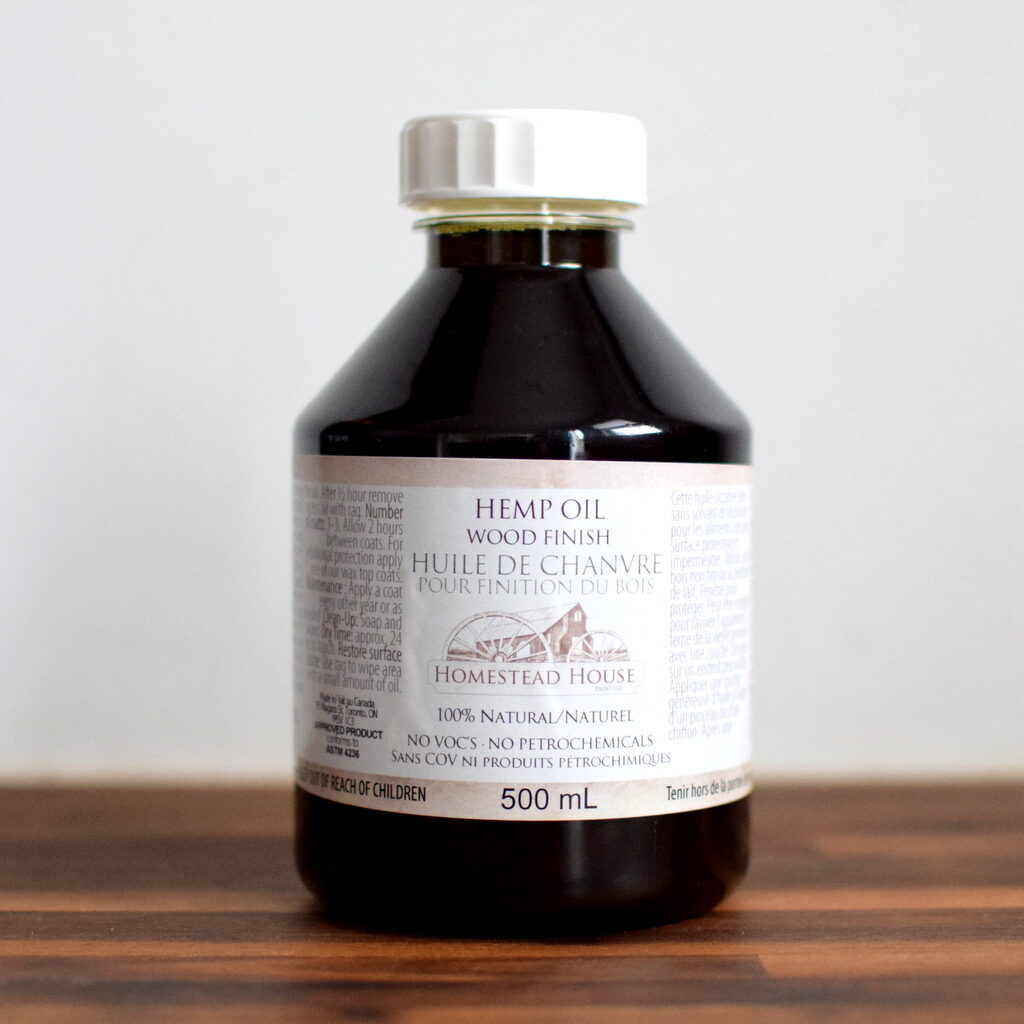
You can find both at your nearest Fusion merchant or Amazon,.
However, I realize that not everyone has a Fusion Merchant near them or for that matter, just prefers the convenience of Amazon or something they can grab at their local stores.
PRODUCTS TO TRY
So here are some other brands that can offer you beeswax, hemp oil, tung oil and other Non-Mineral Oil products, that are still food safe treatments for your butcher block. **AFFILIATE LINKS**
Caron and Doucet – Butcher Block Conditioning Oil and Wood Finishing Wax
Real Milk Paint Company – Tung Oil
Real Milk Paint Company – Hemp Oil (whose products I reviewed in my previous Butcher Block posts and also is a great quality product.)
Block Bros – Block Oil
Tried and True – Danish (Linseed) Oil
Virginia Boys Kitchens – All Natural Wood Seasoning Wax
Virginia Boys Kitchens – Wood Seasoning Oil
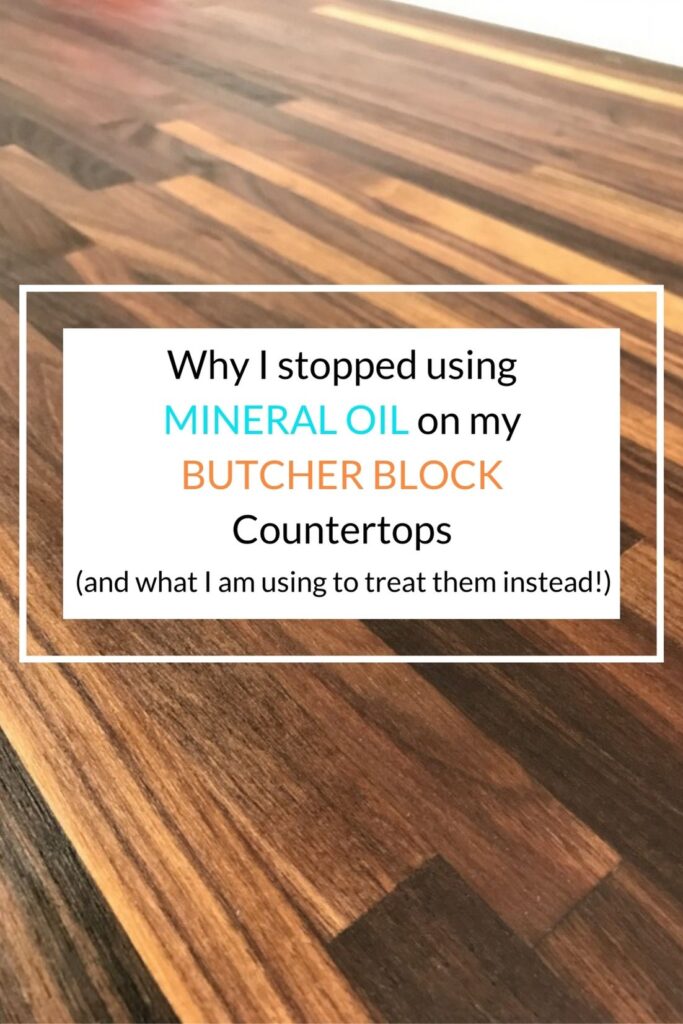

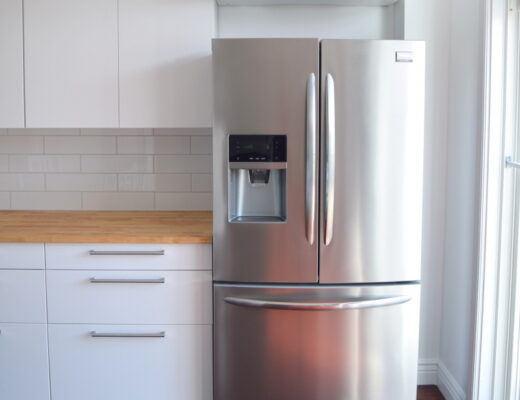
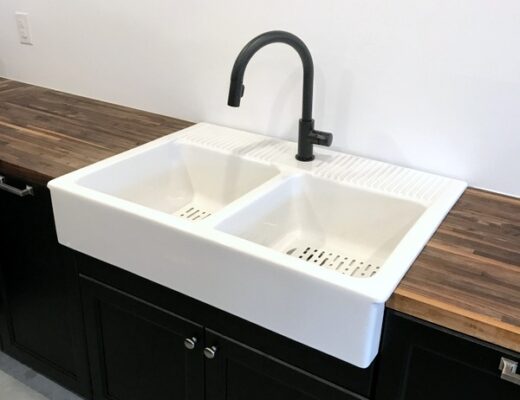
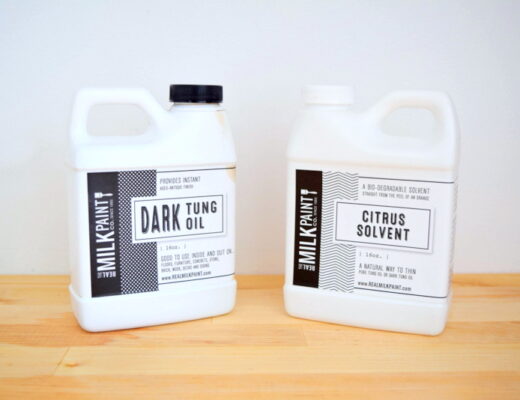
5 Comments
Dave
May 3, 2022 at 1:32 amGreat post! Love the site. I’m curious with the hemp oil and beeswax treatment if you end up with oil stains with any paper items left on the counters, like you would with mineral oils? I’m about to install an ash butcher block, and I’m considering these products. Also curious if the wood will end up darker with the hemp oil than with a traditional mineral oil? Thanks!
Michael D
August 4, 2022 at 4:09 amHey!
Thanks for the post! Hope you don’t mind some questions I’ve been down a rabbit hole of butcher block finishing research!
1.Did you have to use a solvent or sand to get the mineral oil out prior to applying the fusion beeswax/hemp oil and hemp oil?
2. Were your first coats in transitioning from mineral oil with the beeswax blend or just the hemp oil?
3. How long does it take to apply the hemp oil or wax combo? Can the counter tops be used straight away after application? Any issues with heat and sunlight degrading the wax?
I recently purchased a butcher block that was treated with a light mineral oil finish and am wondering if I’ll need to remove it before applying a different oil. Everyone always says to reapply mineral oil often to butcher blocks which makes me think that it should dry out on its own so no real need to try and remove? Although perhaps it’s just soaks deeper into the wood, leaving the top layer dry and exposed again.
I read your article on the dark tung oil from Real Milk Paint as well, which also seems like a great product even if the color wasn’t a great match at the time. I’m wondering if you think the extra curing time may be worth the extra durability and less upkeep that tung oil can provide in comparison to monthly hemp oil and wax applications? My understanding is tung oil only needs to be applied once every 6 months to year and in a much smaller amount that should cure much faster than the first coats.
I’m considering their regular 50/50 blend with citrus solvent from real milk paint, not the dark version so I’m not concerned about the color 🙂
Thank you!
Tanya
August 20, 2022 at 3:11 pmHi! Can the Fusion product be applied after mineral oil has already been applied, or is it not okay to use different kinds of testaments on the same slab of butcher block?
Evonne
September 7, 2022 at 10:43 amHi
I’m planning to get a butcher block as a dining table. Do you think it’s a good idea? Also have you tried walrus oil?
Thanks
Becky
September 10, 2024 at 10:44 amI came upon your post after spending last weekend stripping Waterlox from my Walnut LL butcher block. We had originally finished in 2018 and had nothing but problems. It was good for a year until we decided to do a “maintenance coat” we struggled getting a smooth application and it seeming never cured as hard as the original coat. It cast an orange hue and reacted terribly with baking soda, leaving black marks and rings (after realizing this we had to ban it from our kitchen). We just used real milk paint dark half and love it in contrast to Waterlox. I’m considering using a minwax poly on our sink lip only to help repel water there. I will try the wax at your recommendation for quick wipe downs. Thanks for your review.